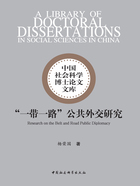
Abstract
Rooted in the ancient Silk Road,the Belt and Road Initiative (BRI) stands as an innovative and comprehensive cooperative framework aimed at fostering practical cooperation across multiple domains among countries worldwide,which is characterized by openness,inclusiveness,balance,and mutual benefit.Underpinned by the principle of connectivity,the BRI is dedicated to enhancing policy alignment,infrastructure connectivity,unimpeded trade,financial integration,and people-to-people bonds between China and other countries.Its ultimate objective lies in stimulating broader,higher-quality,and more profound international collaboration,thereby injecting new impetus into global economic growth,charting new frontiers for development,and forging a novel platform for international economic cooperation.The joint construction of the BRI aligns with the contemporary trends of multipolarity,economic globalization,cultural diversity,and social informatization,reflecting the fundamental interests of the international community.It embodies the shared ideals and aspirations of humanity,contributing a renewed positive energy to the global pursuit of peace and development.
Since its inception,the BRI has garnered significant attention from the international community,drawing enthusiastic responses from numerous countries and international organizations alike.Simultaneously,due to differences,disparities,and lack of understanding,a degree of skepticism,misperceptions,and reservations concerning the BRI persists among parts of the global public.This has led to “perception deficit” and “trust deficit”,which,to a considerable extent,have impinged upon the BRI implementation.Building profound mutual understanding and trust,and winning a robust social consensus have become pressing necessities in advancing the joint construction of the BRI.In light of this,it is imperative to launch and carry out public diplomacy for the BRI.Employing a variety of methods and channels is crucial to present,promote,and disseminate the BRI to the public both within and beyond the BRI region in a comprehensive,accurate,and vibrant manner and is vital for enhancing their understanding and trust towards the BRI and China.It also helps to cultivate a favorable international public opinion atmosphere for the joint development of the BRI,and to solidify the social consensus and public support for the collaborative construction of the BRI.
Drawing on the theories and practices of public diplomacy in both China and the West,this book conducts exploratory research on the Belt and Road public diplomacy.Multidisciplinary theories,perspectives and methods are adopted to offer a comprehensive analytical framework which incorporates the theoretical analysis,concept definition,context assessment,strategy planning and practical approaches.Specifically,the first chapter analyzes the rise and development of public diplomacy in terms of concepts,characteristics,functions,historical development and motivations,and outlines the theoretical framework of public diplomacy in terms of theoretical dimensions,paradigms,components and implementation,and explains the background and significance of the Belt and Road public diplomacy.The second chapter defines the conceptual scope of the Belt and Road public diplomacy in terms of subjects,objects,connotation and meaning,goals,tasks and principles.Chapter Three assesses the implementation context of the Belt and Road public diplomacy from the perspectives of realistic foundations and influence factors.Chapter Four discusses the strategic planning of the Belt and Road public diplomacy from the aspects of institutional framework,strategic arrangements,form selection and effect evaluation.Chapter Five focuses on the practical approaches of the Belt and Road public diplomacy from the perspectives of discourse system,public relations,exchange fields and mechanism construction.
Key words: the Belt and Road Initiative;people-to-people connectivity;public diplomacy;Chinese diplomacy